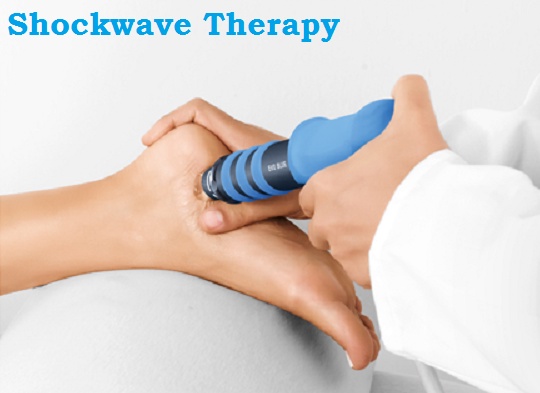Shockwave therapy is a non-invasive treatment that uses high-energy acoustic waves to stimulate the natural healing processes. It treats a variety of musculoskeletal conditions, including plantar fasciitis, Achilles tendinitis, heel spurs, metatarsalgia, tarsal tunnel syndrome, stress fractures, and non-healing wounds or ulcers.
Shockwave therapy works by delivering high-frequency sound waves to the affected area. The sound waves penetrate deep into the tissues, to stimulate blood flow and trigger the natural healing response. Shock wave therapy for plantar fasciitis cost overrides the value of treatment because it reduces pain and inflammation, and promotes tissue regeneration.
Note that shockwave therapy is not appropriate for everyone and should only be performed by a podiatrist. As with any medical treatment, there are potential risks and side effects associated with shockwave therapy, so it is important to discuss your options with your foot doctor before proceeding.
The qualification for shockwave therapy varies depending on the specific condition being treated and the individual medical history. In general, shockwave therapy may be recommended for people who have not responded to conservative treatments such as rest, ice, physical therapy, and medication.
Are you concerned about foot pain? Rather than that, have it examined immediately by Dr. Ejodamen Shobowale at DeNiel Foot and Ankle Center. We have treatment choices available to keep you on your feet.
Treating plantar fasciitis with shockwave therapy
Shockwave therapy is commonly used to treat plantar fasciitiswhen conservative treatments; rest, ice, stretching exercises, and orthotic devices, have not been effective in relieving symptoms. Plantar fasciitis causes pain and inflammation in the heel and bottom of the foot.
Shockwave therapy is non-invasive and typically takes about 15 minutes per session.During the treatment, the healthcare provider applies a special gel to the affected area and then uses a handheld device to deliver the shockwaves. The intensity of the waves is adjusted based on the patient's tolerance level, and the number of sessions required depends on the severity of the condition.
In the case of plantar fasciitis, the acoustic waves are directed at the heel and arch of the foot, where the plantar fascia is located. The plantar fascia is a thick band of tissue that connects the heel bone to the toes and is often the source of pain and inflammation in people with plantar fasciitis.
Studies have shown that shockwave therapy is effective in reducing pain however, it is not a guaranteed cure, and some people may not experience significant relief from their symptoms.
As with any medical treatment, potential risks and side effects associated with shockwave therapyinclude pain, swelling, bruising, and numbness in the treated area. Talk to your foot doctor Houston about the potential benefits and risks of shockwave therapy before undergoing the treatment.
How shockwave therapy works
High-energy waves delivered during shockwave therapy penetrate deep into the tissues, creatingmicrotrauma to stimulatethe production of new blood vessels and promote tissue regeneration. This process can help to reduce pain and inflammation and promote healing.
Shockwave therapy breaks down scar tissue, increases blood flow to the affected area, and stimulates the production of new tissue. It reduces pain and improves mobility in the affected foot.


No comments yet